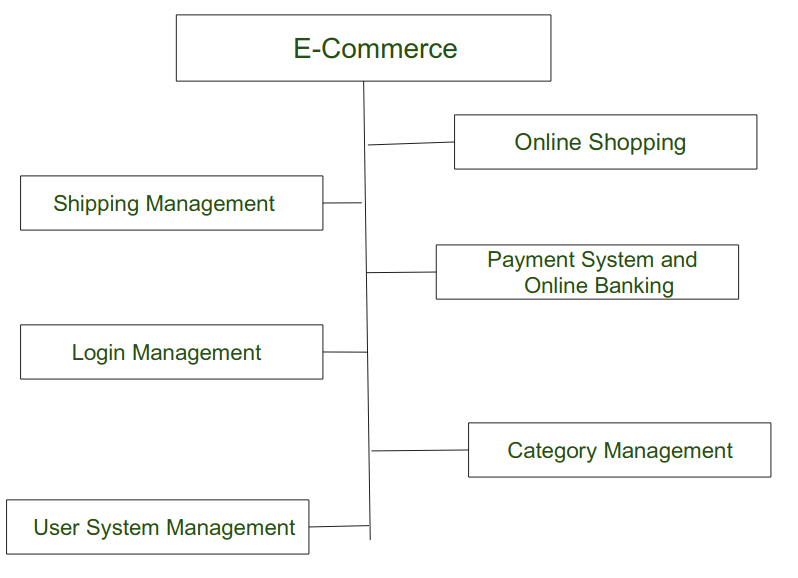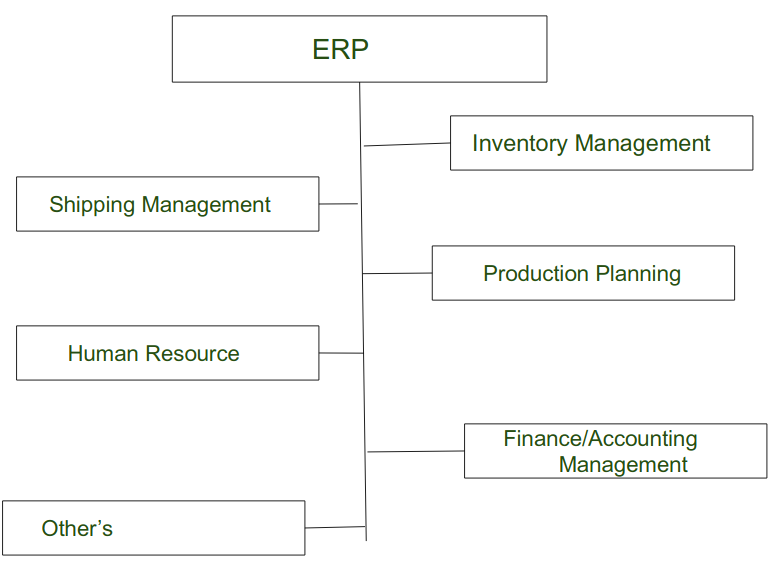电子商务是一种允许通过互联网买卖商品和服务的商业模式。它也被称为电子商务和互联网商务。此外,货币、资金的交易也被视为电子商务的一部分。
一些电子商务软件: Amazon、Flipkart、Quikr、Paytm 等。

有史以来第一次在线销售是在 1994 年,当时一名男子通过他的美国零售平台Net Market 向他的朋友出售了 Sting 乐队的 CD。这是消费者通过万维网或我们今天通常所知的电子商务从企业购买产品的第一个例子。
电子商务类型:
基本上有 4 种主要类型的电子商务模型可以描述消费者和企业之间发生的几乎所有交易。
- 企业对消费者 (B2C):当企业将商品或服务出售给个人消费者时,例如,我们从在线零售商处购买一双鞋。
- 企业对企业 (B2B):当企业将商品或服务出售给另一企业时,例如,软件即服务由企业出售以供其他企业使用。
- 消费者对企业 (C2B):当消费者自己的产品或服务被出售给企业或组织时,例如,权威向其在线观众提供曝光以换取费用或摄影师许可他们的照片供企业使用。
- 消费者对消费者 (C2C):当消费者将商品或服务出售给另一位消费者时,例如,我们在 eBay 上将旧家具出售给另一位消费者。
ERP 系统是一种用于管理企业数据的软件工具。 ERP系统帮助不同的组织处理企业的不同部门。不同的部门,如收货、库存管理、客户订单管理、生产计划、运输、会计、人力资源管理和其他业务职能。它将整个部门的所有数据库组合到一个数据库中,该数据库的所有员工都可以访问该数据库。它有助于执行业务流程所涉及的任务的自动化。
一些 ERP 市场: SAP、Oracle、PeopleSoft、BaanERP 等。

ERP类型:
ERP 系统是一个模块化应用程序,其中包含用于不同业务流程的各种工具。让我们看看最重要的ERP系统模块:
- 内部部署 ERP:内部部署 ERP 解决方案本地安装在您的计算机硬件和服务器上,然后由您的 IT 人员管理。
- 云 ERP:也称为 SaaS,或软件即服务 – 作为服务提供。在这种类型的部署中,公司的软件及其相关数据由 ERP 供应商集中管理,并由客户使用 Web 浏览器访问。
电子商务与ERP的比较:
| ERP | E-Commerce |
|---|---|
| ERP Stands for Enterprise Resource Planning. | E-commerce Stands for Electronic-Commerce. |
| ERP comprises the selling of ERP systems to various organizations and companies. | E-commerce comprises with selling and buying of goods and services over the internet. |
| ERP system is created by vendors that are ordered by some organization. After purchase, the organization can use it. | E-Commerce is available free to use. It only cost that things that are bought online. |
| Less user-friendly on the mobile system. | More user-friendly on the mobile system. |
| One particular ERP system is limited to just an Organization, company, etc. | Everyone can access E-commerce. |
| Example: SAP, Oracle, PeopleSoft, etc. | Example: Flipkart, Amazon, Paytm, etc. |
|
Types of ERP:
|
Types of E-Commerce:
|
| It basically deals with Business to Business where One Business will sell their product (i.e. ERP) to other businesses. | It deals with all i.e. B2B, B2C, C2B, C2C. |
| Data in ERP is more Secure as it is limited to only a particular organization. | Data is available like Price, Rating, products, etc. freely due to this everyone can copy from it which decrease its security level. |
| Many ERP systems provide Business intelligence features due to this data analysis become easy. | E-Commerce doesn’t provide Business intelligence Services to the Customers. |
| Many ERP platforms offer built-in reports such as cash flow and income, so they can be generated without any IT assistance. | E-Commerce Platform only has reporting capabilities on Marketing and Sales. In order to require more facilities, IT assistance is required. |
| Automation occurs in ERP. For Example: If an employee wants to print some important documents, but he is far away from the printer, so he can automate this task easily. | Automation cannot occur in E-Commerce. |
| If a can of any fault in ERP, the organization gives feedback to the ERP vendor, and they will surely correct that fault in the ERP System. | If users can face any fault then they will provide feedback for their problems, but it is not sure that those who provide an E-Commerce facility will solve the issue. |
| ERP System ties together with various business functions. | E-Commerce Focuses only on the User or Customer’s |
| When an organization wants to update its ERP, ERP Vendor will cost charges to the organization. | E-Commerce System is Updated freely for the Users. |
| All the Data of an Organization in ERP systems is Analyzed by them. | All Data of User are analyzed by Producer of E-Commerce System and on the basis of this Product Recommendation and other stuff is shown to the user according to their past data. |
| ERP System supports credit limits or net terms. | E-Commerce Platforms don’t support credit limits or net terms. |